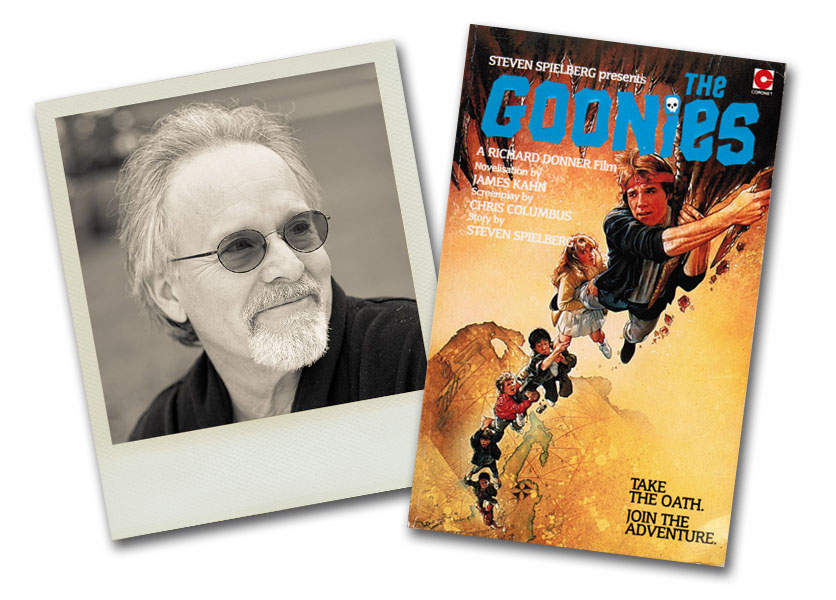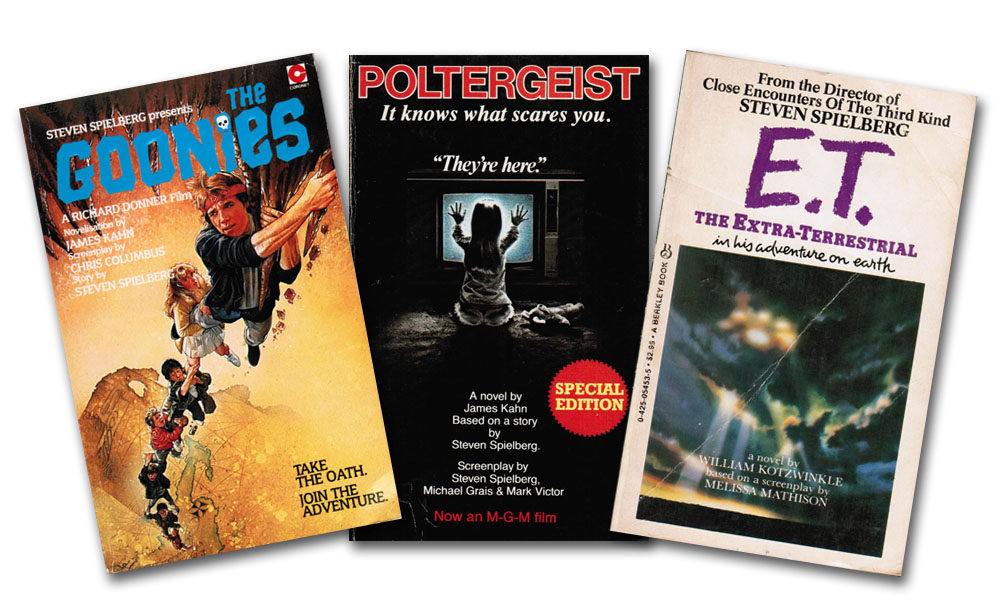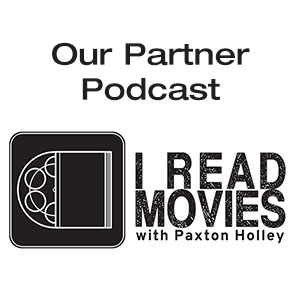One of the more fun aspects of reading movie novelizations is when the author adapting the story from film to book either ends up working from a version of the script that vastly differs from the final edit of the film or decides to take some creative liberties with the material. Depending on the circumstances there is a good chance that a novelization will include scenes that never make it to film, and as fans it can be awesome to chart these excursions from the cinematic plots that we know and love by heart. We here at MovieNovelizations.com thought it would be fun to highlight some of our favorite novelizations that have really strayed from the final films. Whether it’s the inclusion of deleted or alternate scenes, interesting narrative perspectives, or whole new swaths of story dreamed up by some creative authors, we hope you’ll enjoy reading about all of the hidden gems in these books.
For the first entry in this column we thought it would be fun to start with one of our favorite books, the James Kahn penned adaptation of The Goonies. Released in 1985 by Warner Books (and subsequently, the same text was published at the same time in the United Kingdom by Coronet), Kahn’s book appears to have been adapted from the screenplay by Chris Columbus as the novel includes scenes that Columbus had written for the film but were ultimately cut before filming or during editing on the movie. Some of this material, especially scenes that were shot and cut from the film, have infamously surfaced over the decades as either additions to the TV cut of the film or included as deleted scenes in the special features of the first DVD release back in the early 2000s. So you may already be familiar with the “Octopus Fight” during the film’s climactic pirate ship sequence or the scene where Mikey, Mouth, Data, and Chunk have a run in with Troy in a convenience store before they set off on their adventure. These are some of the fairly common bits of lost material that find their way into the novelization, but there is a lot of other material in the book that falls more into the “WTF did I Just Read” territory that we’d like to concentrate on in this column. So let’s crack the cover on The Goonies and see what kind of treasures we can find in these yellowed vintage pages…

First and foremost Kahn made some interesting choices with format and perspective with the novel. The text is bookended by excerpts from local Astoria newspaper articles, the first detailing the escape of Jake Fratelli, and later and story covering the “rescue” of the kids, the arrests and prosecution of the Fratelli gang, and some other interesting footnotes to the story. The main reason for the addition of these articles is that for the bulk of the book Kahn chose to use Mikey as the sole narrator in a first person perspective. If we had to guess we’d say that this was in an attempt to make the novel more approachable for kids as a young adult adaptation, but it ends up making the whole novel very difficult to read. First person is a tricky perspective, and when adapting an omniscient film experience it forces the narrative to constantly explain why the narrator knows about sequences that they didn’t take part in or know little about. Thus the newspaper articles are Mikey’s way of opening the story with the facts of the breakout and the ensuring police chase. What killed us is how dry this approach came off, lacking any of the humor and excitement that was in the opening scenes of Donner’s film. Not only that but some little details are lost, most importantly how the chase manages to cross the paths of all the Goonies, Andy and Steph. Not a huge deal, but it’s a detail we love in the film as it both introduces us to the characters and gives some background details on each of them (Mouth’s dad being a plumber, Steph’s family working as fishermen on the docks, and Chunk being a spaz to name a few.)
On the other hand, the “articles” that close out the story are kind of interesting. For one, they take the ending of the movie a bit further in that there is confirmation, through a series of excerpts, that the Goon docks are safe as the plans for the new golf course are ditched in favor of building more low cost housing. The already constructed country club was even rumored to be converted into a community center that will feature a children’s center, a Chinese restaurant, a plumbing supply house, a fish market, a new addition to the museum, and a public-access invention laboratory (so every kid’s family basically gets a stake in the building.) This is a little goofy for sure, but still, it’s pretty darn cute. The last article also has a notice of the Bar Mitzvah for Jason “Sloth” Cohen, the newly adopted son of Mr. & Mrs. Jerry Cohen. So I guess Chunk made good on his promise to have Sloth come live with him, but in doing so “Sloth” apparently gave up his given name of Lotney Fratelli.
As for the narrative being from the perspective of Mikey, this is also a little weird in terms of execution, but it illuminates some pretty cool insights. On the plus side, it’s kind of fun to “hear” Mikey tell the story, as he adds some background to the story and adds his thoughts on almost every aspect of the adventure. The character makes a metric ton of Star Wars references (notable because the author, Kahn, had also just written the Return of the Jedi novelization.) Mikey, as well as playing the cool, level-headed leader of the group, expresses a bit of his leadership by describing each of the Goonies and their various quirks, annoying habits, and strengths, which enriches some of the decisions he makes in the book (and subsequently in the film.) Kahn, through the character, even ends up explaining some of the subtle references that made it into the performances in the final film (like when Mouth first comes to the Walsh house and starts trying to cheer the brothers up with a John Belushi impression.) Even though a lot of the additions we get because of the change in perspective in the narration are fun, some of the changes that Kahn makes left us scratching out heads. For instance, Kahn has Mikey hating Saturday morning cartoons (we guess that he’d rather be outside adventuring) and comparing the Mad magazine “fold-in” concept to Playboy centerfolds, which is just weird in that it ages up the character much further than he is portrayed in the movie. Kahn even goes so far to already have Mikey dating girls, even reminiscing about smooching some of them, which seriously puts a dent in the affect of the scene later in the book when he and Andy mistakenly kiss. It’s certainly not as heart-warming when you know that Mikey is junior Casanova. Again, the danger of writing in the first person like this is that we’re in Mikey’s head, and being inside his noggin is nothing like what we thought it would be from watching the movie. Granted, we know we’re really inside Kahn’s head, but hopefully you get our drift.
There are a lot of other slight differences in the book include Mouth’s propensity for rhyming, Data pulling out inventions three times as often, and Mikey tending to censor some of the racier jokes and sight gags from the film in his narrative descriptions. For instance, remember that broken stature of David, the one that is the Walsh mother’s favorite? Well Mikey didn’t want to repeat Brand saying that, “…If God made it that way, you’d all be pissing in your faces…”, so he tones it down in the book. This is a very odd choice by Kahn considering some of the added story moments we’ll get to in a minute. By the by, in the book Mikey’s mom discovers the broken statue, which again muddles a joke that plays really well in the film.
In a very rare occurrence in movie novelizations, and as an example of how James Kahn may have been about 20 years ahead of his time, there’s also a very interesting bit of story cross-pollination with another Spielberg project, Poltergeist. At one point in the book Mikey shares an anecdote about how he broke his arm falling into an excavation in the newly built Cuesta Verde Estates housing development connecting the events of The Goonies to those in Poltergeist. Did we mention that James Kahn also wrote the novelization for Poltergeist? The thought that, Cuesta Verde would be within biking distance from Astoria is pretty cool, as if there really was this specific Spielberg suburbia out in the pacific northwest where all kinds of crazy shit happened. Maybe E.T.’s spaceship would have landed there too if that novelization hadn’t already been written by William Kotzwinkle.

There are also a couple of extensions of the wishing well scene in Kahn’s novelization. The first involves Andy being inducted as an official member of the Goonies by repeating the Goony Oath:
“I will never betray my Goon dock friends, We will stick together until the whole world ends, Through Heaven and Hell and nuclear war, good pals like us will stick like tar, In the city, or the country, or the forest, or the boonies, I am proudly declared a fellow…”
The oath is finished off with the exclamation of “Leech!” as Mikey realizes they’re all covered in leeches. So in the wishing well sequence, at the end, after Andy has sent up the bucket empty, all the kids realize that they’re covered in leeches. It seems crazy that this scene was included in Columbus’ script considering that there is a very similar sequence, also starring Corey Feldman, in the film Stand By Me just a year later. In the sequence Data has a bright idea and ends up strapping two wires to a 20-volt battery. He sticks the wires in the water by his feet sending a light electrical charge through his body that’s lethal enough to kill the leeches. Having figured this out, he does this for the rest of the Goonies, and afterwards, James Kahn tags on a small scene that is, well, kind of obscene. After getting the mild electric shock Andy and Stef are standing off to the side where Kahn describes them as having “…limp smile(s) and small sigh(s)…” He then has Steph say to Andy, “I got all tingly – just my luck, I’m in love with a pond!” After which the following passage appears: ‘It annoyed Andy, for some reason, I don’t know, like someone had made her feel good and she didn’t want to…’ Then Andy hauls off and slaps Data saying “Don’t-you-ever-try-that-again-with-me-Buster!” In a perfect example of what this column seeks to unearth in movie novelizations, what the f*&#! Did James Kahn actually suggest that Andy and Stef had orgasms from the electric shock that Data gave them!?! Let’s remind ourselves that this adaptation is, for all intents and purposes, aimed at a young adult crowd.

